Explore five key image annotation types and their use cases in industries such as autonomous vehicles, healthcare, agriculture, and more. These methods are crucial for improving the accuracy and capabilities of AI and ML systems in recognizing objects and comprehending scenes.
Different image annotation types are important for tailored data labeling and optimizing AI/ML models. These image annotation types enhance precision and help achieve project success across various visual recognition tasks.
From the precise delineation of objects got with Bounding Box Annotation to the immersive depth perception offered by 3D Cuboids, each method has a unique and important function. Polygons allow for intricate and accurate object outlining, while Semantic segmentation provides pixel-level understanding for comprehensive scene analysis. Lines and Splines offer the ability to capture complex shapes and contours with finesse.
It is important to understand various image annotation types, uses, and benefits. Whether you’re focused on object detection or image classification, these different annotation types will empower your AI and ML systems to excel in their tasks.
Contents
5 Types of Image Annotation
Let’s explore which types of picture annotations would be most suitable for your project. The five most prevalent types of image annotation, along with some examples of their applications, are explained below.
Bounding Boxes
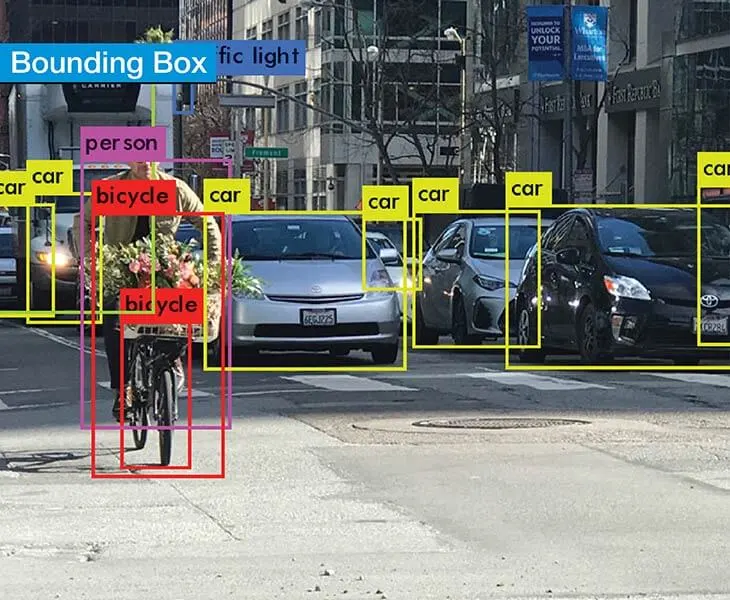
Bounding boxes are rectangular shapes drawn around objects or regions of interest within an image. They work by defining an object’s position with four coordinates (x, y) and specifying its size using width and height dimensions. They facilitate object localization and recognition in computer vision tasks, aiding AI models in understanding and processing visual data. They serve as a fundamental tool for object detection, tracking and annotation, providing a simple way to define and locate objects within visual data.
Common Use Cases of Bounding Boxes
Bounding boxes are used in industries like autonomous vehicles, retail, healthcare, surveillance and more.
- In autonomous vehicles, they help identify and track objects like pedestrians and other vehicles, ensuring safe navigation.
- The transportation sector employs bounding boxes to monitor traffic flow and congestion. Annotating vehicles in traffic images helps optimize traffic signal timing and plan road maintenance.
- In the retail sector, bounding boxes are used to track products on store shelves. This assists in automated inventory management, ensuring stock levels are accurate and items are replenished as needed.
- Radiologists and medical researchers annotate tumors and abnormalities in medical images using bounding boxes. This assists in early diagnosis and better treatment planning.
- Bounding Boxes are also valuable in surveillance and security, aiding in the detection and tracking of intruders or suspicious activities.
- Agricultural researchers use bounding boxes to identify and analyze crop types and their health in satellite or drone images. This data aids in precision agriculture, optimizing crop yields and crop loss prevention.
3D Cuboids
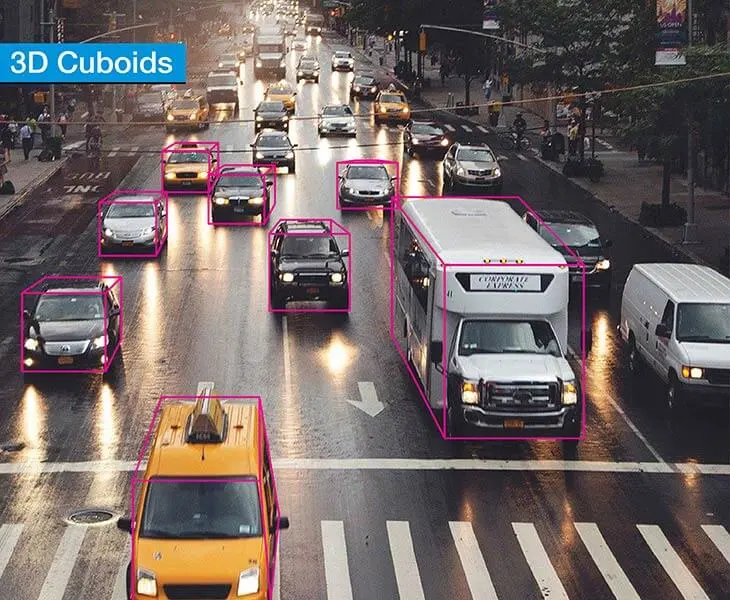
3D cuboids are three-dimensional geometric shapes resembling rectangular prisms. Unlike 2D bounding boxes that enclose objects with 2D rectangles, 3D cuboids encompass objects in three dimensions, defining their length, width, and height. While bounding boxes are flat and aligned with the object’s axes, 3D cuboids provide a more precise spatial representation, making them valuable in applications like object localization in 3D space, robotics, and augmented reality for accurate object placement and orientation.
Common Use Cases of 3D Cuboids
- In autonomous vehicles, 3D cuboids are used to represent the spatial extent of objects like cars, pedestrians, and obstacles. This enables precise object tracking and collision avoidance in three-dimensional space, enhancing the safety and reliability of self-driving systems.
- In geospatial analytics, 3D cuboids are employed to model and analyze complex terrain and urban environments. They help assess building heights, urban planning, and infrastructure development, providing valuable insights for city planning, disaster management, and environmental monitoring.
- In manufacturing, 3D cuboids are used for quality control to inspect and measure the dimensions of products. They help identify defects, ensure precise manufacturing, and maintain product consistency.
- Architects and builders use 3D cuboids to plan and visualize construction projects. In interior design, 3D cuboids assist in space planning and furniture arrangement. They help designers visualize and optimize room layouts.
- Robotics relies on 3D cuboids to identify and manipulate objects. Robots use this information for tasks such as pick-and-place operations in manufacturing and fulfillment centers.
- 3D cuboids are used in sports analytics to track the movement of athletes during games. They provide insights into player performance and game strategy.
Polygons
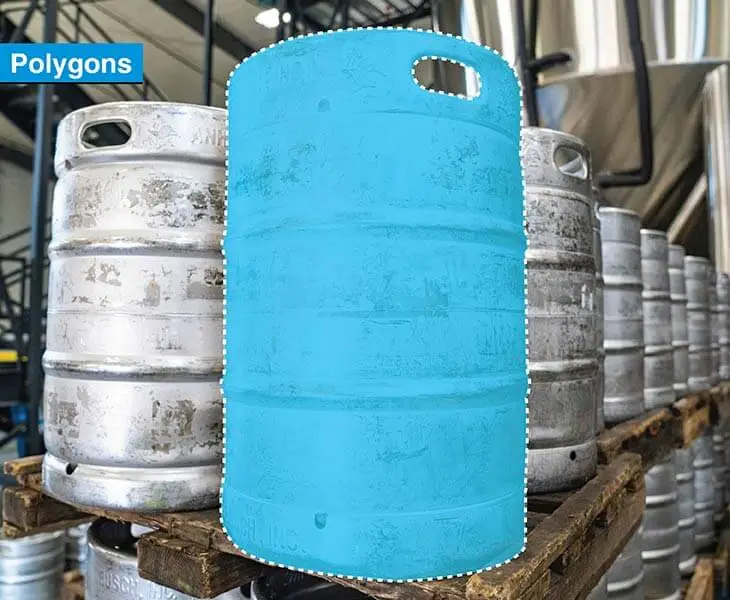
Polygonal annotation involves drawing precise, irregular shapes around objects in images or point clouds. It offers advantages over bounding boxes and 3D cuboids by providing more accurate object boundaries for complex shapes. This higher-fidelity annotation helps improve object recognition and localization, crucial in tasks like fine-grained object detection and scene understanding, enhancing AI model performance.
Common Use Cases of Polygons
- Farmers and agronomists use polygonal annotation to outline individual plants or crop rows in satellite or drone imagery. This data aids in monitoring crop health, identifying areas needing irrigation or pest control, and optimizing yield.
- In cadastral mapping, polygonal annotation is employed to delineate property boundaries and land parcels, assisting in land registry management and property ownership records.
- Urban planners use polygonal annotations to designate land-use zones in cities, aiding in zoning regulations, infrastructure planning, and smart city development.
- Geospatial analysts use polygonal annotation to identify disaster-prone areas and assess the impact of natural disasters, assisting in emergency response and recovery efforts.
- In radiology and pathology, polygonal annotation helps identify shaped tumors and lesions, contributing to early disease diagnosis and treatment planning.
- Polygonal annotations are crucial for delineating intricate object boundaries, such as leaves on plants or the structure of biological cells, aiding in scientific research and agriculture.
Semantic Segmentation
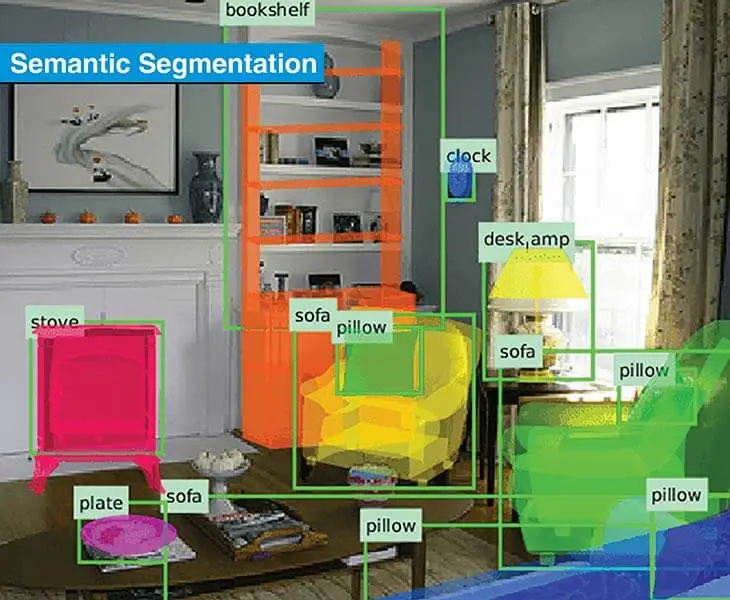
Semantic segmentation is a computer vision technique that assigns a specific class label to each pixel in an image, segmenting it into distinct regions based on object categories (e.g., road, car, tree). Unlike other annotation types like bounding boxes or polygonal annotations, which provide object-level information, semantic segmentation provides pixel-level granularity. This enables a more detailed and precise understanding of the image content, making it valuable for tasks like scene parsing, object recognition, and autonomous navigation.
Common Use Cases of Semantic Segmentation
- Semantic segmentation helps self-driving cars perceive and understand their surroundings, identifying road lanes, pedestrians, traffic signs, and other objects for safe navigation.
- It is used in healthcare to delineate and classify different anatomical structures and abnormalities in MRI, CT, and histological images, aiding in more accurate diagnosis and better treatment planning.
- Semantic segmentation assists in crop monitoring by distinguishing between healthy plants, weeds, and soil. It enables targeted herbicide application and precision farming practices.
- Satellite and aerial imagery enables land cover classification, urban planning, and environmental monitoring by identifying features such as forests, urban areas, and bodies of water.
- AR and VR applications use semantic segmentation to understand and interact with the real world more intuitively, allowing virtual objects to interact with real-world environments.
- Robots use semantic segmentation to interpret their surroundings, making informed decisions for tasks like navigation, object manipulation, and human-robot interaction.
- It helps retailers track and manage inventory by recognizing individual products on store shelves, ensuring accurate stock levels, and enabling cashier-less checkout systems.
- In manufacturing, semantic segmentation identifies defects and quality issues in products during the production process, reducing waste and maintaining product quality.
Accurate image annotation is critical for computer vision models.
Download our guide to understands the key terms, concepts and image annotation techniques.
Lines and Splines
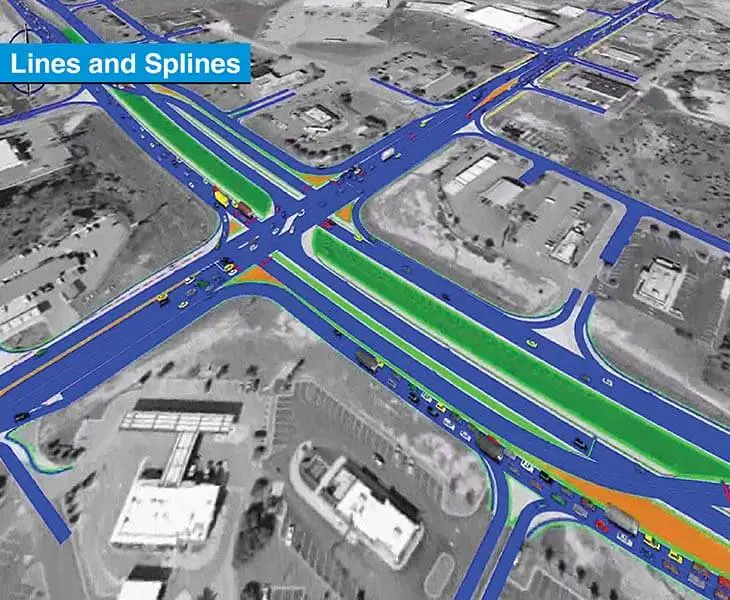
Lines and splines are geometric constructs used in image annotation to define shapes, object boundaries, or regions of interest with precision. Lines represent straight segments, while splines are smooth curves defined by the control points. They play a crucial role in outlining objects, roads, or contours, enhancing the accuracy of object detection and tracking. Lines and splines are valuable tools for annotators to create detailed and accurate annotations, benefiting computer vision tasks like object recognition and image analysis.
Common Use Cases of Lines and Splines
- Lines and splines are used to annotate road lanes, lane boundaries, and road markings. This information is crucial for autonomous vehicles to navigate and stay safe within designated lanes.
- Splines help in defining smooth and continuous paths for self-driving cars, ensuring comfortable and efficient routes during navigation.
- Lines are used to outline the shapes of traffic signs, aiding in their recognition and understanding of traffic rules.
- Lines and splines can define the boundaries of obstacles or other vehicles, supporting obstacle detection and collision avoidance systems.
- Lines and splines help annotate camera views, indicating areas of interest for surveillance. They are also used to track the movement of intruders or objects within a security camera’s field of view.
- In security and access control, lines and splines can be applied to outline facial features, improving the accuracy of facial recognition systems.
- Lines and splines are used to define virtual boundaries or perimeters in security systems. Intrusions across these boundaries trigger alarms or security measures.
- In security camera footage analysis, lines and splines help track the movement of objects or individuals, assisting in forensic investigations and incident analysis.
See how a leading food company partnered with HabileData to conduct a thorough analysis of food waste across different food chains and restaurants. HabileData’s meticulous quality-check procedures guaranteed impeccable annotations, elevating the client’s credibility within the industry. This partnership demonstrates the significance of various image annotation techniques in delivering precise and reliable results for complex tasks like food waste analysis.
Explore HabileData’s comprehensive and affordable image annotation services.
Unlock the power of visual AI. Explore advanced annotation techniques.
Get Started Now! »Conclusion
Annotation techniques such as bounding boxes, 3D cuboids, and polygonal annotation are indispensable tools that enable computer vision systems to understand and interpret visual data with accuracy. These annotation methods find diverse applications across a multitude of industries, from autonomous vehicles revolutionizing transportation safety to security systems enhancing surveillance and object recognition. In fields like agriculture, healthcare, and urban planning, precise annotations empower data-driven decision-making and resource optimization.
Each annotation type has its own unique strengths and use cases. Bounding boxes offer simplicity and efficiency, while 3D cuboids provide depth information crucial for advanced spatial understanding. Polygonal annotations deliver pixel-level precision. As technology continues to advance, these annotation techniques will remain instrumental in shaping the future of computer vision, robotics, and AI across a broad spectrum of applications, making our world smarter, safer, and more efficient.
Request a demo to see how image annotation can revolutionize your project.
Connect with our experts today! »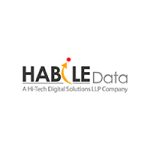
HabileData is a global provider of data management and business process outsourcing solutions, empowering enterprises with over 25 years of industry expertise. Alongside our core offerings - data processing, digitization, and document management - we’re at the forefront of AI enablement services. We support machine learning initiatives through high-quality data annotation, image labeling, and data aggregation, ensuring AI models are trained with precision and scale. From real estate and ITES to retail and Ecommerce, our content reflects real-world knowledge gained from delivering scalable, human-in-the-loop data services to clients worldwide.






